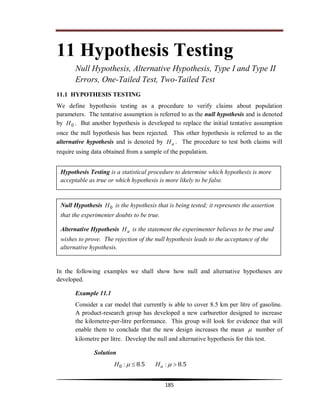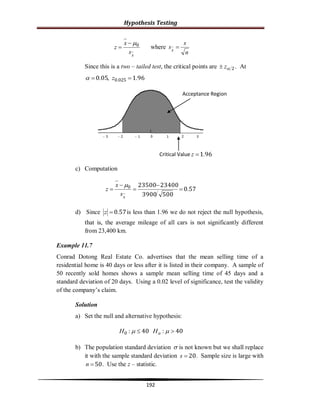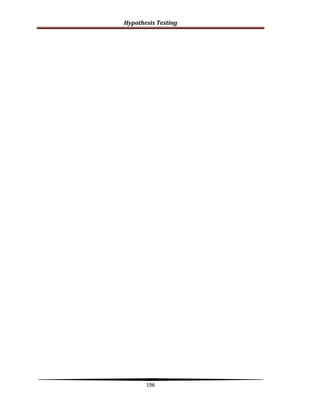Hypothesis testing is a statistical procedure used to determine if a claim about a population parameter is valid. It involves a null hypothesis (H0), which is the initial assumption to be tested, and an alternative hypothesis (Ha), which replaces the null if rejected. Type I error occurs when the null is falsely rejected, and Type II error occurs when the null is falsely accepted. The document provides examples of setting up null and alternative hypotheses for one-tailed and two-tailed hypothesis tests, and defines key terms like critical region, test statistic, and level of significance.













